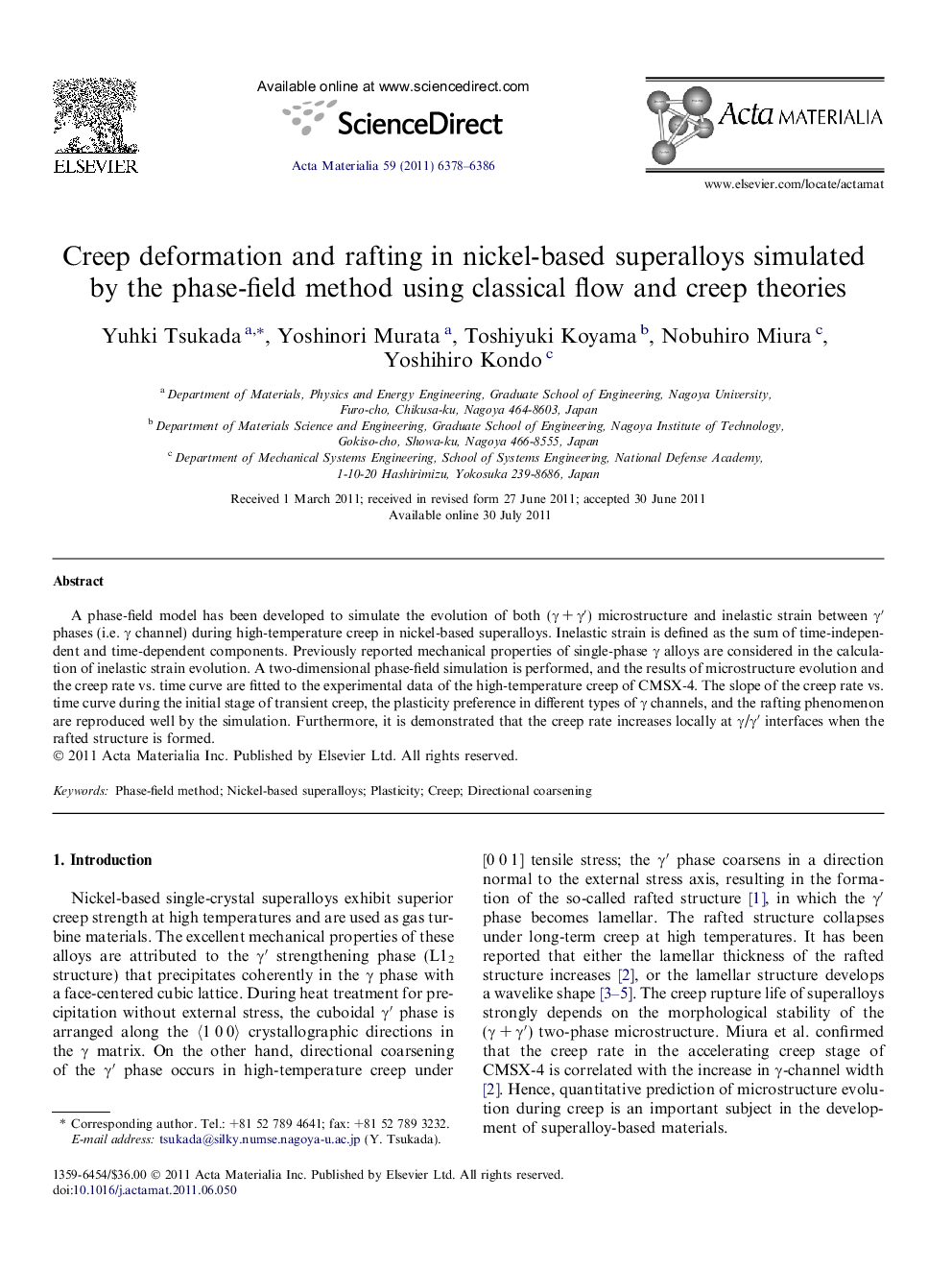| کد مقاله | کد نشریه | سال انتشار | مقاله انگلیسی | نسخه تمام متن |
|---|---|---|---|---|
| 10620573 | 988637 | 2011 | 9 صفحه PDF | دانلود رایگان |
عنوان انگلیسی مقاله ISI
Creep deformation and rafting in nickel-based superalloys simulated by the phase-field method using classical flow and creep theories
دانلود مقاله + سفارش ترجمه
دانلود مقاله ISI انگلیسی
رایگان برای ایرانیان
کلمات کلیدی
موضوعات مرتبط
مهندسی و علوم پایه
مهندسی مواد
سرامیک و کامپوزیت
پیش نمایش صفحه اول مقاله

چکیده انگلیسی
A phase-field model has been developed to simulate the evolution of both (γ + γâ²) microstructure and inelastic strain between γⲠphases (i.e. γ channel) during high-temperature creep in nickel-based superalloys. Inelastic strain is defined as the sum of time-independent and time-dependent components. Previously reported mechanical properties of single-phase γ alloys are considered in the calculation of inelastic strain evolution. A two-dimensional phase-field simulation is performed, and the results of microstructure evolution and the creep rate vs. time curve are fitted to the experimental data of the high-temperature creep of CMSX-4. The slope of the creep rate vs. time curve during the initial stage of transient creep, the plasticity preference in different types of γ channels, and the rafting phenomenon are reproduced well by the simulation. Furthermore, it is demonstrated that the creep rate increases locally at γ/γⲠinterfaces when the rafted structure is formed.
ناشر
Database: Elsevier - ScienceDirect (ساینس دایرکت)
Journal: Acta Materialia - Volume 59, Issue 16, September 2011, Pages 6378-6386
Journal: Acta Materialia - Volume 59, Issue 16, September 2011, Pages 6378-6386
نویسندگان
Yuhki Tsukada, Yoshinori Murata, Toshiyuki Koyama, Nobuhiro Miura, Yoshihiro Kondo,